HD Music Day at NAMM?
Every January the National Association of Music Merchants — the organization supporting music stores, musical instrument makers, synths, software, and related accessories — get together in Anaheim at the convention center, to show off their new products, and dazzle attendees with celebrity endorsements and demos . The show is only open to industry insiders but motivated members of the musician community usually find their way in as well. It’s a zoo! One minute you might see a musician checking out mouthpieces for his/her flugelhorn and the next watch a 9-year old prodigy pounding away on an electronic drum set. There’s usually a lot of famous musicians working their way through the crowds as well. Last year I saw Stevie Wonder and I usually run into Alan Parsons, Albert Lee, Laurence Juber, or Carl Verheyen (all artists on the AIX Label!).
In addition to the show floor booths, the organizers also produce a series of presentations, demonstrations, and panels. I enjoyed listening to musician/producer to the stars Don Was (who happens to come from my home town in Michigan and is an acquaintance) and Grammy-winning engineer/producer Ed Cherney discussing their work with Bonnie Raitt a few years ago. Sadly, Ed passed away recently. He was an exceptional individual, friend, and exceedingly talented…it was only 6 months ago I saw him at Cantor’s Deli!
I received an emailed notice about HD Music Day, which is an initiative organized by Blue Coast Music’s Cookie Marenco in association with NAMM and the AES (Audio Engineering Society). On January 19, there will be four seminars spotlighting High Definition Music. Here’s the announcement:
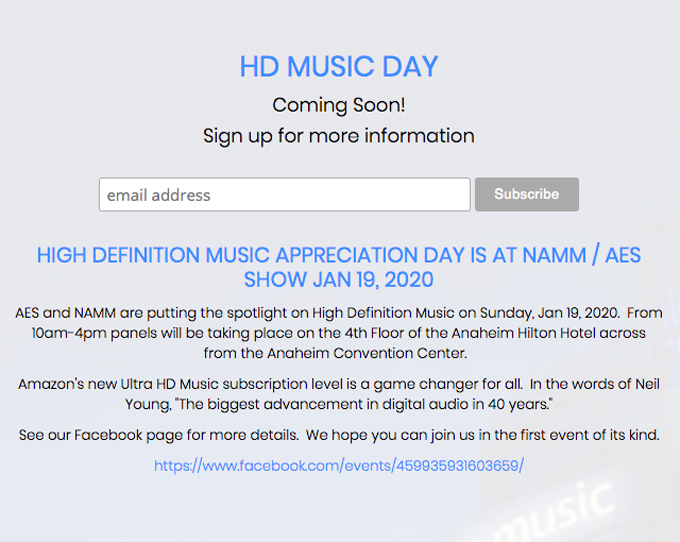
I’ve known Cookie Marenco for many years and consider her a colleague and friend. We’ve been on panels together and share a mutual enthusiasm for great recordings. She’s been a strong advocate for better sounding music, loves analog and DSD, and has a large catalog of albums not unlike those I’ve produced for AIX Records. Her background includes working at Windham Hill during their heyday. She’s knows how to make really wonderful recordings!
The promotional blurb on her DSD-Guide.com site reads:
We welcome professional audio engineers, interested consumers, and students to experience high quality digital sound as the audiophiles have been hearing for years. We’ll get details for day passes to you soon. Check with us at support@bluecoastmusic.com
This event will focus on the consumers who are driving this movement and the benefits to professional audio engineers who create music in HD sound. We’ll also explore why artists and labels should drive their fans to upgrade to HD performing subscription levels that are being offered by Qobuz and Amazon.
There’s a lot of jargon around what to call higher quality audio. HD (High Definition), HRA (High Resolution Audio), HiFi, High End… let’s make it simple… it’s better than mp3 and CD quality. Don’t be left behind!
“…it’s better than mp3 and CD quality.”
I found the last paragraph above somewhat revealing. There is no mention of the industry accepted terminology of “hi-res audio” — the name and logo that Qobuz and Amazon associate with albums they consider “hi-res“. I still prefer the term HD-Audio but “HD” seemed to lose favor over the years. The reality is that “hi-res audio” and its associated logo are limited to hardware — CONTENT AND SOFTWARE ARE SPECIFICALLY EXCLUDED but it’s a cool logo and no one really knows that. I guess that’s why Qobuz and Amazon have opted to use the logo on their sites in spite of its being incorrect. There is a logo for “hi-res music” but it’s decidedly not cool and no one knows it.
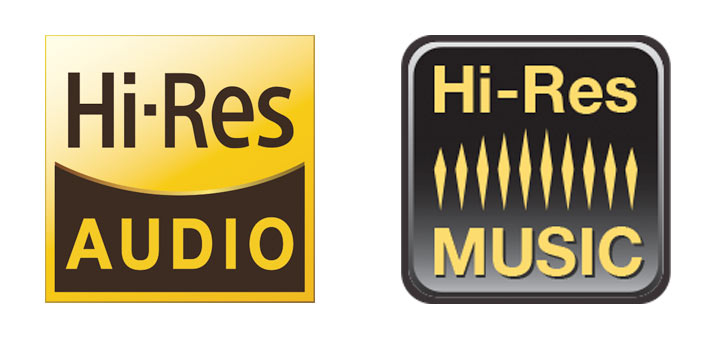
Cookie’s invitation softens the definition established by the DEG, labels, NARAS, AND others by calling it simply “higher quality audio“. As a reminder the agreed upon definition of hi-res audio that it is “better than CD”. Not better than than mp3 or CD quality. I’ve already pointed out the nonsense that Amazon Music HD pulled by elevating CD spec audio to HD status (Read here). And now in the midst of promoting a series of seminars on “HD Music”, Cookie proposes we ignore all reference to previous definitions and elevate any recording that is “better than mp3 and CD quality” as HD. Huh?
Specifications matter! The potential fidelity of a recording is limited (maybe some would say enhanced) by the specifications of the format used to record and produce it.
My takeaway (given my recent research project and an insider’s view of the whole HD music initiative) is that the promotion and servicing of HD Music, HRA, “hi-res audio”, hi-res music”, or “higher quality audio” — or whatever you want to call it — has been completely derailed by those most wanting it to succeed — the industry and content providers. When the definition of a new audio format becomes confused and subject to the whims of marketing types, the whole market segment becomes meaningless. The time has come to acknowledge that “higher quality music” is primarily determined by the skill and proclivities of those producing, engineers, and releasing it and not by the format of the final delivery container.
Obviously, starting and maintaining a signal path with the greatest potential fidelity is a wise choice for those of use making recordings. But unfortunately other factors often outweigh those considerations.
A Personal Note and Request
My son Christopher is a very creative and multitalented individual! A skilled musician and producer (cello, bass, vocals and guitar), sound engineer, writer, graphic designer, and artist. His abilities are impressive. Of course, as his father my encouragement and endorsement is expected, but his prodigious talents have been recognized by professionals in the entertainment business for a long time. Years ago, Dreamworks animation invited him to tour their Burbank production studios, offered advice on his portfolio, and encouraged him to continue developing his skills after one of their staff members saw his early “Snooky and Gumboe” drawings at my recording studio. Chris was 9-years old at the time!
During the intervening years he has provided storyboards for music videos (including the infamous Snoop Dogg video “Lavender”, responsible for a Donald Trump Twitter rant), television shows and commercials, and short films, done dozens of designs for bands, posters, book covers, and t-shirts, and been writing stories ripe for treatment as graphic novels. He recently left a production coordination job at Baby Giant (headed by Jimmy Hayward, former Pixar animator and director of “Horton Hears A Who”) to work on art full-time.
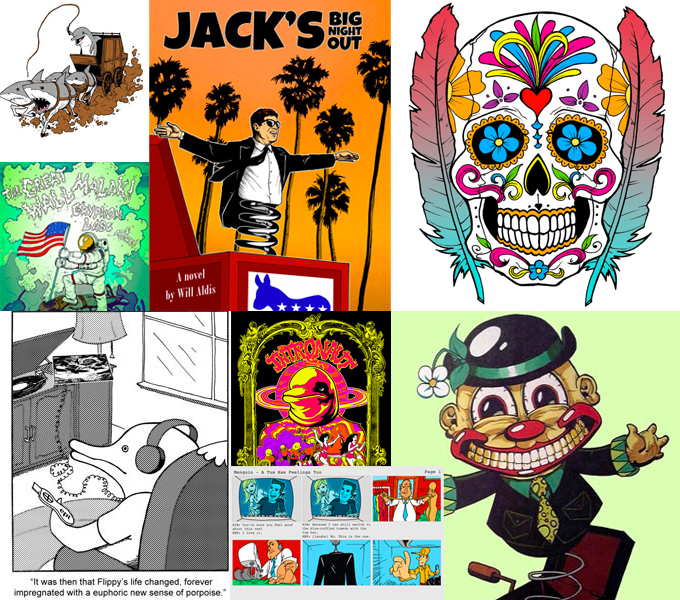
A few weeks ago, he shared with me a project that he has been developing for many years, a 3-volume, thirty episode graphic novel called SPOOK. He describes it as a story about “a nameless American spy who is hunted by the CIA after returning from a mysterious nine year absence abroad.” He shared some of the artwork, the scene-by-scene breakdown of Volume I, the storyline throughout the 10-book series, and the early drafts of the series poster. It’s impressive work, compelling on a number of levels, and I offered to help him in any way I could. This blog post is a first step in that process.
We’ve decided to launch two Kickstarter campaigns for the SPOOK series. The first will done in conjunction with the KS MAKE/100 January promotion. It offers several options for the full color SPOOK “movie” poster — digitally printed, 11″ x 17″ or 19″ x 27″, on heavy weight, high gloss stock (see below for a preliminary image). I’m hoping we can build enough interest (and associated mailing list) over the next couple of weeks through this site and various social media outlets to reach the goal of selling 100 SPOOK posters on the initial Kickstarter campaign.
Chris has developed a rather unique style in the creation of the artwork for the SPOOK series. Instead of his usual pen and paper drawing technique, he uses a 12″ iPad, stylus, and a drawing application. The results are unique — a mixture of graphic novel drama and photorealistic imagery.
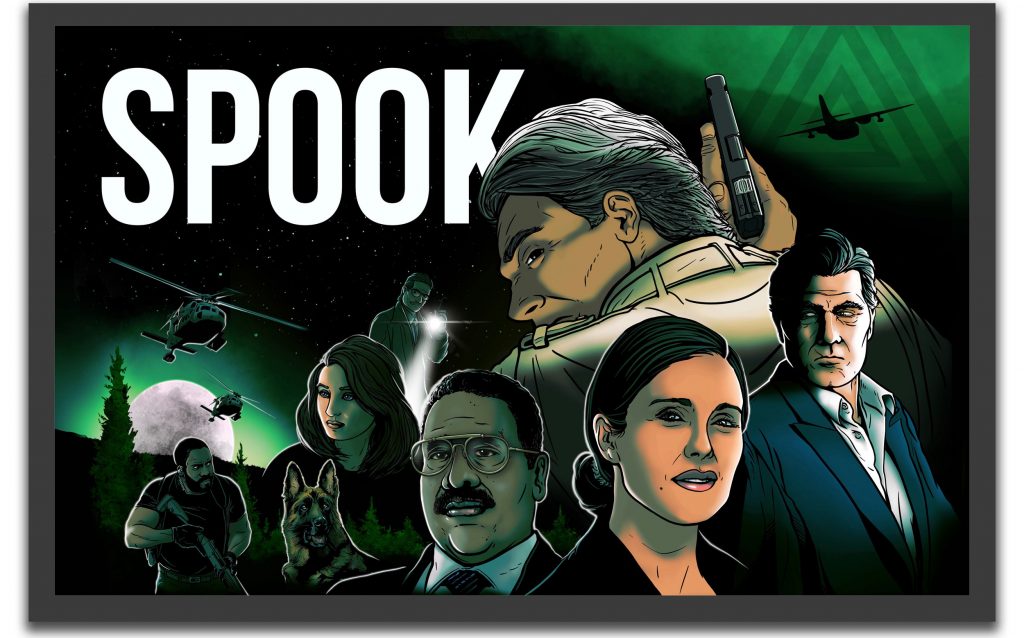
The first KS campaign includes options for signed and numbered posters, additional artwork from the novel, and even the chance to be illustrated as a character in the book! Later this spring, he’ll launch a second campaign for Volume 1 of the SPOOK series, which will include options for both hard and soft cover editions of the 60-75 page book, digital wallpaper artwork, poster art prints, character drawings, script copies, individual plates and much more! Signing up for the initial phase will allow access to premiums unavailable to those who wait for the full book campaign to be launched in the spring. Please consider signing up now to be alerted to the launch date.
Sign Up for the SPOOK mailing list:
If you’re interested in this project and would like to learn more, please sign up below. The initial KS campaign will launch within the next 10 days. There will be announcement videos on YT, a new website, and artist page. Stay tuned. And thanks. (You will not be spammed by leaving your email here).
Thanks very much for adding your name to the SPOOK mailing list. There is no obligation at this time but posters will be numbered based on the order received. The price of the posters will be $25-75 depending on the reward level. To learn more, please visit https://www.spookofficial.com/. Domestic shipping will add $5 and international orders will be $15).

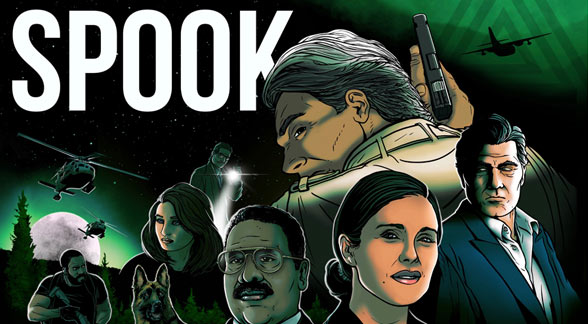
I was both impressed and pleasantly surprised by your recent postings on PS Audio’s Copper Magazine. The results of your investigation are consistent with mainstream understanding of human hearing capabilities and limitations. I am glad you choose to differentiate the terms CD and RBCD as you can record just about anything on a CD. RBCD meets a specific set of criteria which I have found very well thought out especially considering the technology available at the time it was created. It remains for me the standard by which I judge all competing formats. I’m also glad to see what I think is a change in your viewpoint. Previously you wanted a format that included everything a human can hear. As I understand it you’d now settle for anything contained in music which is a subset of your previous criteria. To this end RBCD meets your new criteria I think. There seems to still be some confusion about sounds over 20 khz, a siren call I’d heard since the early 1960s. Looking at a full presentation of the Fletcher Munson curves shows that the threshold of hearing and the threshold of pain intersect at 20 khz. This means that to sense audio vibrations above 20 khz it would have to be intense enough to be experienced as pain. Likewise you’d be hard pressed to find music that challenged the 96 db dynamic range of RBCD. There are still major improvements that can be made to sound recording and reproduction technology but IMO they do not lie in that direction.
Yes, my position has evolved. I’m still an advocate for 96 kHz/24-bit recordings but have found it unlikely that Hi-Res Audio provides any audible advantage or fidelity improvement over Redbook CDs. It just doesn’t seem that anyone can tell the difference…even with properly done source recordings. The emphasis should be on the production quality of the original recording.
I have been an audiophile for more than 50 years but now really don’t trust anyone writing in the field except you and Archimago. I find your position on the audible advantages, or lack thereof, of 96/24 recordings to be particularly honorable considering you have an economic stake in these recordings and could easily gain from the fibs.
It’s ironic that the audiophile press is hung up over Hi-Res while, by and large, they ignore multichannel recordings, where the advantages in realism over stereo are immediately audible and dramatic.
Thanks Jonathan. You’re absolutely correct. It’s hard to acknowledge that the investment I made in terms of money and time in realizing my catalog may not have been necessary. However, they recordings speak for themselves and I don’t think I could have done it any other way. The aspect of immersive surround mixes is a true advancement and well worth it.
Finally we are in complete agreement. I understand that hi rez recordings may be useful to the recording and mastering engineers but for playback RBCD is sufficient. I find it strange that audiophiles and even audio engineers often reject what is accepted by mainstream science and engineering as bedrock theory that has been relied upon in many fields for decades, even centuries in the case of Fourier analysis.